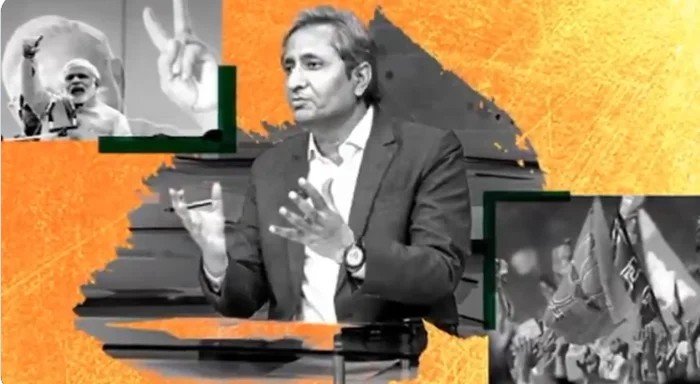Modi Government’s Diplomatic Failures and the Erosion of Media Integrity in India

In recent years, the Bharatiya Janata Party (BJP)-led Indian government under Prime Minister Narendra Modi has often claimed international diplomatic successes and robust national media support. However, increasing criticism both domestically and internationally suggests a different reality — one of diplomatic shortcomings and media manipulation. The current geopolitical climate, especially in relation to India’s regional and global diplomacy, has exposed significant cracks in both foreign policy effectiveness and journalistic credibility in India.
Diplomatic Isolation Amid Global Crises
The Modi administration’s foreign policy strategy has often been described as aggressive and unilateral. While this approach may have yielded some short-term domestic approval, its long-term implications are now coming to light. India’s handling of key international incidents — particularly its approach toward Pakistan, China, and multilateral forums like the United Nations — has drawn criticism from several global actors.
During moments of regional tension, India’s attempts to isolate Pakistan diplomatically have seen limited success. Countries such as Turkey, Iran, and even close strategic partners like Saudi Arabia have maintained balanced or sympathetic tones towards Islamabad. Meanwhile, China continues to strengthen its foothold in the region through diplomatic and economic alliances, often overshadowing India’s efforts.
Perhaps most notably, the United States and other Western allies have avoided unequivocally siding with India during critical junctures, offering instead neutral calls for de-escalation. This lack of firm support undercuts New Delhi’s narrative of global diplomatic strength and suggests a failure to translate bilateral relationships into meaningful multilateral influence.
Failure to Counter Disinformation with Transparency
At the heart of India’s diplomatic weaknesses lies a lack of transparency and accountability, especially during military skirmishes or cross-border events. Rather than confronting realities with evidence-based discourse, the Modi government — often aided by pro-government media outlets — has opted for a propagandist approach.
The Pulwama-Balakot episode is a case in point. While the Indian government claimed success in its airstrikes in Balakot, international defense analysts questioned the veracity and impact of the operation. Satellite imagery, neutral expert commentary, and Pakistani media showed limited or no structural damage — a stark contrast to the Indian narrative.
Such discrepancies not only weaken India’s diplomatic credibility but also erode the trust of the international press. When democratic nations lean into disinformation, they lose the moral high ground in global negotiations and conflict resolutions.
Godi Media and the Decline of Independent Journalism
A central player in this unfolding crisis is the Indian mainstream media, often referred to disparagingly as “Godi Media” — a term coined to describe news outlets seen as subservient to the government. These media organizations have frequently broadcast unverified or misleading content in the name of nationalism.
For example, several media houses aired outdated or doctored military videos, falsely claiming them to be live coverage of Indian retaliation against Pakistan. In another case, video footage of Israel’s Iron Dome defense system was repurposed as evidence of Indian military preparedness. Such distortions not only misinform the public but also damage the nation’s image in the global media landscape.
Moreover, independent journalists and platforms critical of the Modi administration have faced censorship, online harassment, and in some cases, legal threats. These trends point toward an increasingly authoritarian media environment — one where truth is often sacrificed at the altar of political expediency.
Internal Dissent and Intellectual Backlash
Despite government efforts to control the narrative, voices of dissent are growing louder. Former diplomats, retired military officers, and even members of India’s own civil society have criticized the government’s handling of diplomacy and the media’s role in facilitating a one-sided story. Former Foreign Minister Yashwant Sinha, for instance, has openly questioned the legitimacy of military operations promoted by the BJP government and has called for greater transparency.
Likewise, several digital platforms and young journalists in India are rising to challenge the mainstream narrative. Through YouTube channels, podcasts, and independent investigative journalism, these individuals are providing alternative perspectives that resonate with an increasingly skeptical and digitally connected youth.
The Road Ahead: Reclaiming Credibility
For India to regain its standing on the world stage and preserve the integrity of its democracy, it must confront both its diplomatic shortcomings and its deteriorating media environment. Genuine diplomatic engagement, rather than populist rhetoric, should become the cornerstone of its foreign policy. Simultaneously, protecting press freedom and ensuring journalistic accountability are essential to rebuilding public trust.
True nationalism is not rooted in suppression of facts but in the fearless pursuit of truth — even when that truth is inconvenient to those in power. The Modi government and the Indian media must remember that in a democratic society, transparency is not a weakness — it is the foundation of strength.
Reference: مودی سرکار کی سفارتی ناکامی اور گودی میڈیا کا مکروہ چہرہ بے نقاب
